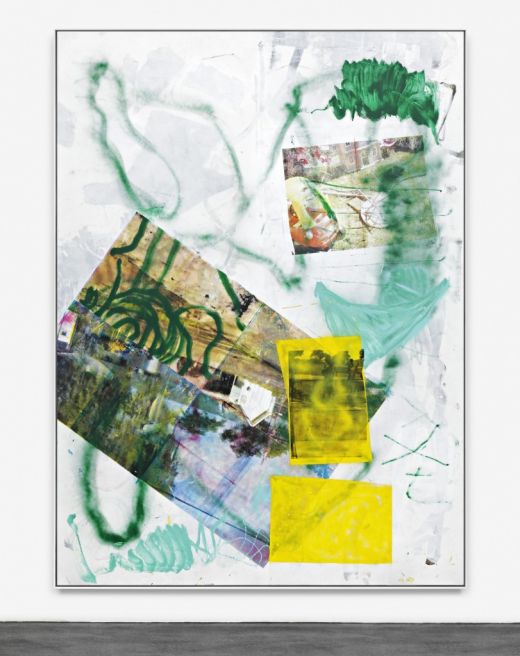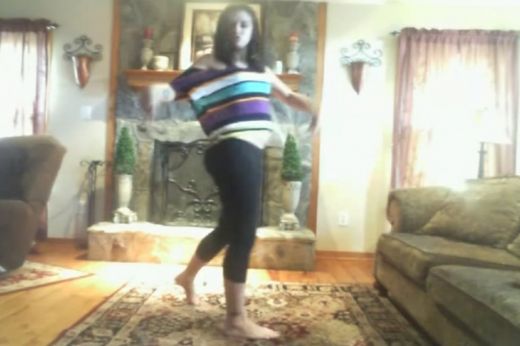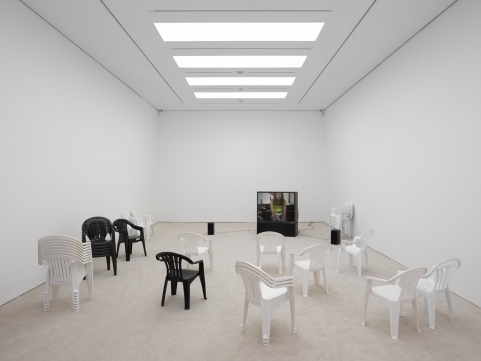
Leo Gabin, Rocked After Being Caught, 2013. Lacquer, spray paint, acrylic and silkscreen on canvas, 106.3 x 77.95”. Courtesy of Peres Projects, Berlin./p>
Visualized elements of Harmony Korine’s 1998 novel-of-sorts A Crackup at the Race Riots are central to their project. Borrowing the novel’s title, a two-part film is screened on the ground floor of the gallery. The artists also present a series of gestural paintings with traces of sports team logos (the Miami Dolphins and the Florida State Seminoles make appearances), McMansions, and pixelated photographs of vacant parking lots and side streets. During my conversation with them via Skype—De Vooght was, undoubtedly, the commanding officer—I was told that the gallery was a vessel for a larger series of paintings, collaged video clips, a book entitled Tallahassee, and a forthcoming, extended stay in the Sunshine State. It should be noted that Tallahassee originated in Berlin at Peres Projects, founded by Miami-born Javier Peres.
The films are atmospheric investigations of what Florida, supposedly, feels like to the anti-tourist (like Gabin themselves): a rarely-publicized glimpse into the life of a Florida teenager away from the beaches, the nightclubs, and Disney World. Unlike the neon splashes of Korine’s more recent “Spring Breakers“ (2012), Leo Gabin captured the empty spaces between suburban lots, teenagers creating YouTube videos of twerking and rapping in their taupe-carpeted bedrooms. They are interested in the mess that kids are mired in as a result of cultural and societal entropy. “There’s this duality,” De Vooght continued, “It’s a magic place, but also a very sinister place… not that it’s staged like a movie, but there’s always something perverse and fake.”

Leo Gabin, A Crackup at the Race Riots, 2013. Video, 37’ 21”. Courtesy of Peres Projects, Berlin.
So what do they see in Florida? If Leo Gabin’s contentions about young Floridian living are taken at face value, viewers would quickly dub Florida as the unhappiest place on earth, a place where aspiration, effort, imagination, and persistence shatter under crushing societal and environmental inertia. Thomas Nagel’s seminal essay “What Is It Like to Be a Bat?” (1974) points out that no matter how much a person attempts to immerse themselves in a foreign situation—even to the point they may look similar to a completely different species—their constitution forbids them from ever absorbing the psychology of that external condition.

Leo Gabin, Inside the White Cube (Mason’s Yard), installation view. Courtesy of White Cube, London/Peres Projects, Berlin. Photo credit: Jack Hems.










